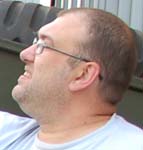1⁄1Panavia Tornado GR4
...
Post a Comment
Panavia Tornado
The Panavia Tornado is a family of twin-engine, variable-sweep wing combat aircraft, which was jointly developed and manufactured by Italy, the United Kingdom, and West Germany. There are three primary Tornado variants: the Tornado IDS (interdictor/strike) fighter-bomber, the suppression of enemy air defences Tornado ECR (electronic combat/reconnaissance) and the Tornado ADV (air defence variant) interceptor aircraft.The Tornado was developed and built by Panavia Aircraft GmbH, a tri-national consortium consisting of British Aerospace (previously British Aircraft Corporation), MBB of West Germany, and Aeritalia of Italy. It first flew on 14 August 1974 and was introduced into service in 1979–1980. Due to its multirole nature, it was able to replace several different fleets of aircraft in the adopting air forces. The Royal Saudi Air Force (RSAF) became the only export operator of the Tornado in addition to the three original partner nations. A tri-nation training and evaluation unit operating from RAF Cottesmore, the Tri-National Tornado Training Establishment, maintained a level of international co-operation beyond the production stage.
The Tornado was used by the Royal Air Force (RAF), Italian Air Force and RSAF during the 1991 Gulf War, in which the Tornado conducted many low-altitude penetrating strike missions. The Tornados of various operators were also used in conflicts in the former Yugoslavia during the Bosnian War and Kosovo War, the Iraq War, Libya during the Libyan civil war, as well as smaller roles in Afghanistan and Yemen. Including all variants, 992 aircraft were built.
In 1984, the UK Ministry of Defence began studies for a GR1 Mid-Life Update (MLU). The update to GR4 standard, approved in 1994, would improve capability in the medium-altitude role based on lessons learned from the GR1's performance in the 1991 Gulf War. British Aerospace (later BAe Systems) upgraded 142 Tornado GR1s to GR4 standard, beginning in 1996 and finished in 2003. 59 RAF aircraft are receiving the CUSP avionics package which integrates the Paveway IV bomb and installs a new secure communications module from Cassidian in Phase A, followed by the Tactical Information Exchange (TIE) datalink from General Dynamics in Phase B.
History adapted from Wikipedia.
Yorkshire Air Museum
The Yorkshire Air Museum is open every day except Christmas Day and Boxing Day and is the largest independent air museum in Britain and is also the location of The Allied Air Forces Memorial. It is a Registered Charity and nationally accredited museum (No.66). Situated in a 22 acre parkland site on the former World War II RAF Bomber Command Station at Elvington near the City of York, the Museum/Memorial is located on the largest and most original WWII station open to the public. It was also the only base used by the French heavy bomber squadrons during the war and today includes award winning gardens, a large NAAFI style restaurant and shop, 15 top class exhibitions and over 60 historic aircraft and vehicles, many of which are in working order. In 2011 & 2013 it was voted the top Specialist Attraction in Britain. Our President is Air Chief Marshal Sir Stephen Dalton and our Vice Presidents include Air Chief Marshal Sir Andrew Pulford RAF, Chief of the Air Staff, General Denis Mercier Chief of the French Air Force, General Jean-Paul Paloméros Supreme Allied Commander NATO and His Grace Dr John Sentamu, Archbishop of York.Test shamelessly stolen from the Museum's website. Go look.
XZ631
Copyright ©2021 by Darren Baker. Images also by copyright holder unless otherwise noted. The views and opinions expressed herein are solely the views and opinions of the authors and/or contributors to this Web site and do not necessarily represent the views and/or opinions of AeroScale, KitMaker Network, or Silver Star Enterrpises. Images also by copyright holder unless otherwise noted. Opinions expressed are those of the author(s) and not necessarily those of AeroScale. All rights reserved. Originally published on: 2015-10-31 08:31:12. Unique Reads: 11330

















































